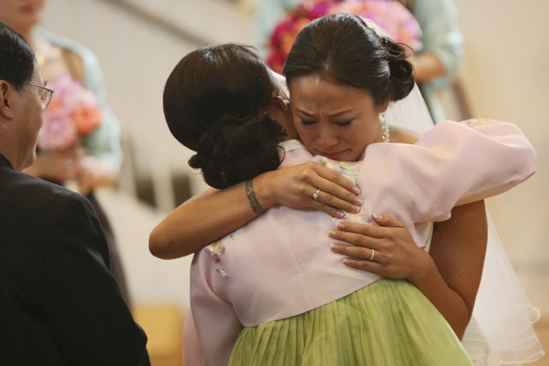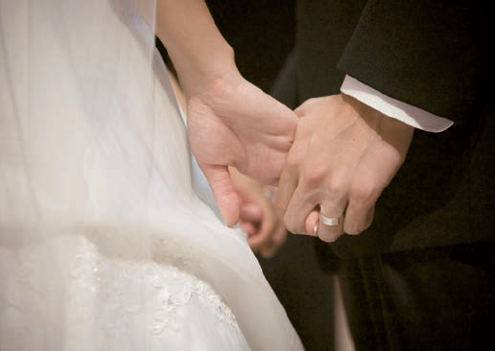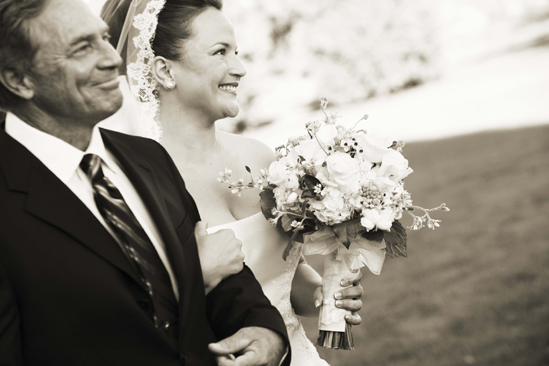
Wedding ceremonies can take place in a wide variety of locations as we talked about in Chapter 4. Most any ceremony site will offer both great photo opportunities and difficult shooting situations. In fact, shooting the ceremony can be the most difficult shoot of the entire event, since it is your job to capture all the special moments without being obtrusive. This requires you to move around quietly while everyone else is stationary.
Having a good understanding of the order of the ceremony will help you make sure you're in the right place at the right time. When planning with the couple be sure to ask many questions about the order of events and logistics of the ceremony.


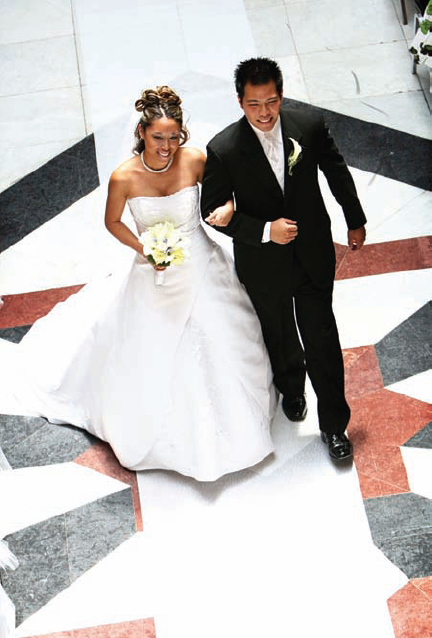

Many wedding ceremonies take place indoors, in buildings of worship. These buildings are usually very well taken care of and have fantastic architectural details. Make sure to get some wide angle photos showing the beautiful venue in all its glory. Of course, this means you need to build time into your schedule to do so. Consider getting to the venue early to capture these shots, especially if you won't be attending a rehearsal.
The biggest concern when shooting indoors is lack of light. To the naked eye, there may be plenty of light to see the ceremony and make out the beautiful details of the location. But often, the light is not adequate for the camera's sensor.
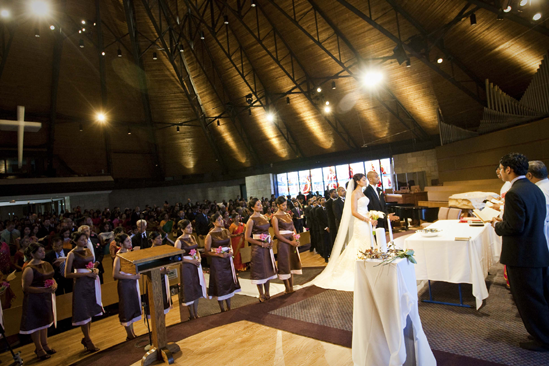
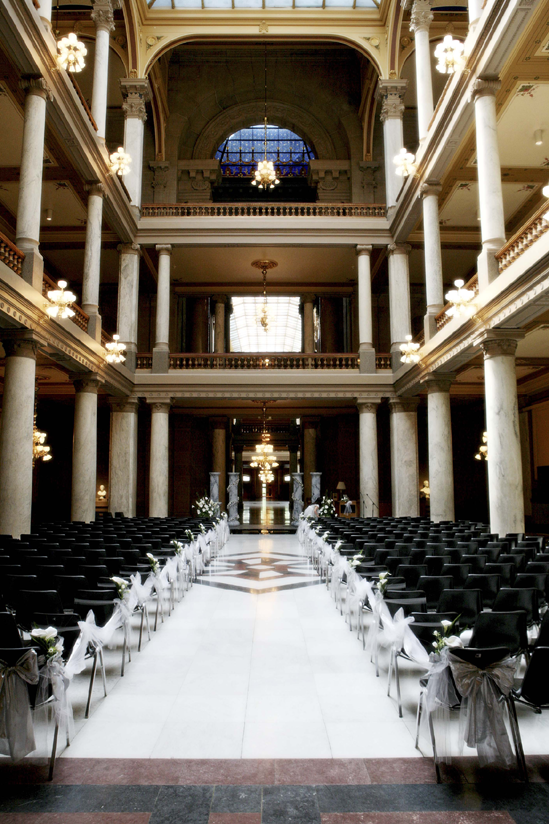
To successfully shoot in the low light situation, bring your own lights, usually in the form of a flash or two. While this works great for posed portraits and set up shots, it doesn't work for the ceremony. The flash frequently firing can be very distracting and may also be frowned upon when shooting in a religious venue. Practice using these low light shooting tips to get the correct exposure in these situations.
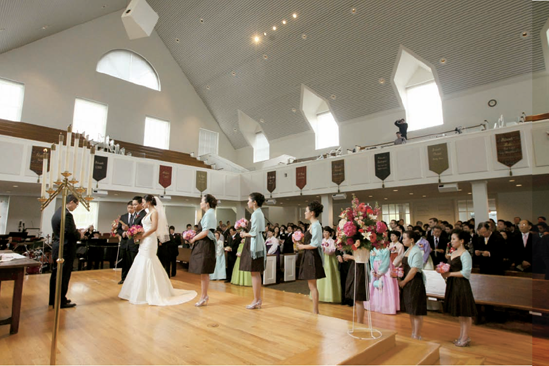
Shooting indoors may also offer some very unique angles, especially if the location has a balcony, allowing you to shoot down on the ceremony. Familiarize yourself with the location prior to the wedding so you know where you can and cannot shoot. Make sure you check with appropriate personnel before just walking around a house of worship. While it may or may not be your religion, all religions need to be shown the proper respect. Remember, you are there by invitation and should behave as such.

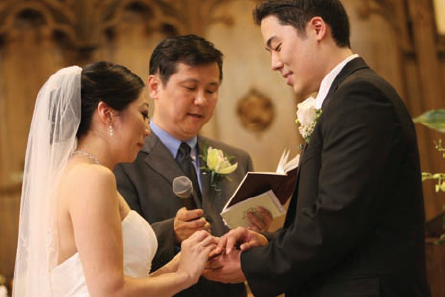
Many couples choose to get married outdoors because the natural setting is beautiful. Ocean views or majestic mountains, it doesn't matter; shooting offers amazing backdrops for your photos. Be sure to take advantage of these locations by capturing photographs encompassing not only the wedding party, but also capturing the view. Not only will it serve as a great background, but it will also remind the couple of their very special ceremony.
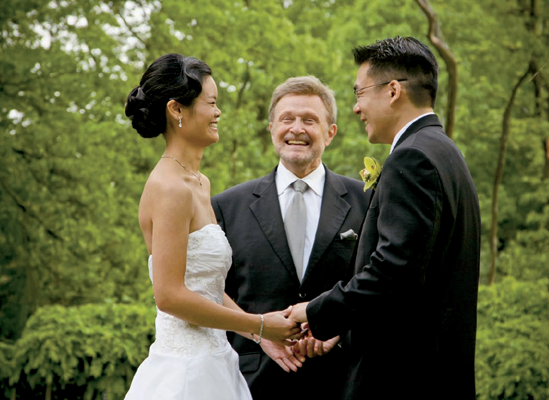
When shooting outdoors, lighting can also be problematic, but for very different reasons. The intensity of the light outside can change quickly when a cloud passes overhead. Or the amount of light can change as the sun goes down, causing areas that start out in bright sunlight to be in deep shadow by the end of the ceremony.
It's key to understand the three types of outdoor light – bright sun light, diffused cloud light, and shaded light. The light will constantly change, requiring you to continually adjust the exposure settings as the ceremony progresses. These lighting condition changes also change the temperature of your white balance. Practice in advance so you know what settings to adjust, and will be prepared to make changes on the fly. You must also be aware of lens flare as light strikes the large front element of your lens. It pays to have a lens hood for all your lenses already mounted so you can avoid this, especially when shooting outdoors.
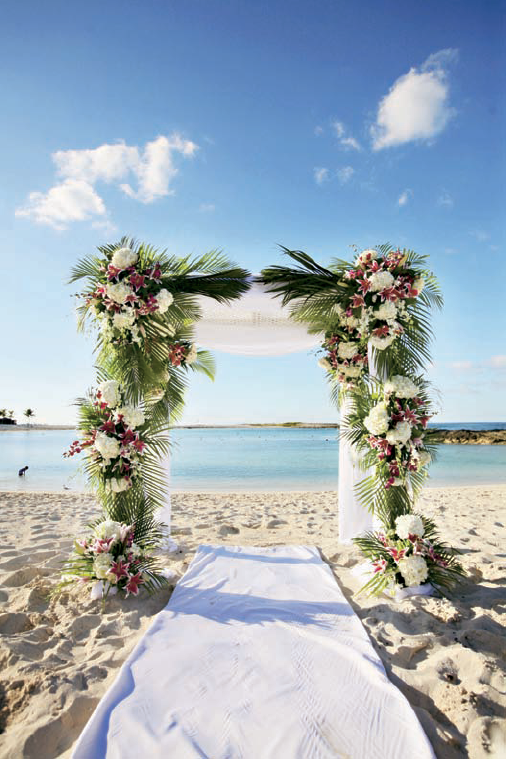
You may encounter another challenge when shooting outdoors. Part of the scene may be in bright sunlight but the other part is in deep ashadows. While the human eye can adjust automatically, the camera sensor is not so advanced, and the photographer must decide what to expose for. The trick is to remember what the focus of your image is and expose for that part of the scene. The other option is to move so you can recompose the scene and avoid areas of extreme highlights and shadows. During the ceremony, you don't have the option to move your subjects in and out of light to capture them with proper exposure, so you must reposition yourself to recompose the shot. For example, when you look at a bride and only half of her face is lit while the other half is dark, rather than shooting her straight on, shoot just the one side of her that is lit.
Photographs of the bridal party making their way down the aisle are some of the "must have" photographs of the wedding ceremony. For the best view, position yourself to shoot each person as he or she starts down the aisle. Knowing the order and route of the processional lets you be in place and ready to shoot when the wedding starts and not scrambling to get into position as the first of the wedding party passes you by. In traditional Christian weddings, the processional order is as listed to the right.
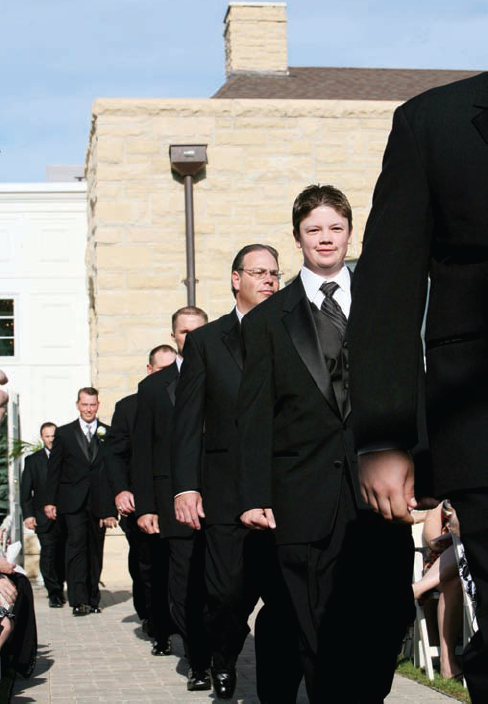
When I am photographing alone, I generally like to position myself halfway down the aisle so I can capture the processional as well as the reaction of the parents and family members who are closer to the front. I can also capture the groom's reaction this way. Think of yourself as the chair umpire at a professional tennis match sitting in the middle of the court. Your head will need to go back and forth from left to right to capture all the moments. If the processional aisle is narrow, I often stand at the last seat closest to the aisle, disguising myself as a guest so I'm not obtrusive. When I have a second shooter, I position myself to focus entirely on the bride, and the other photographer hangs out near the alter to capture the groom and parents.
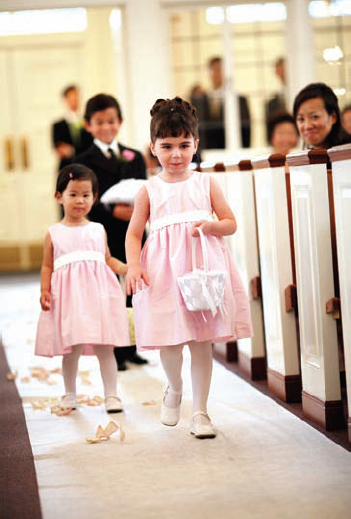
As with all aspects of the wedding, your best bet is to ask about the order of the processional so there are no surprises. The one sure thing, however, is the last person to walk down the aisle will be the bride. Make sure you are ready for her. If you have a second shooter, make sure he or she is focused on the groom, so you don't miss the opportunity to capture his response to his bride.

When shooting the processional, try to get both full-length shots and close ups to capture their expressions. This start of the wedding is very exciting and that is usually conveyed on the participant's faces.
Think of the wedding ceremony as a sequence of key moments. This will help you to be prepared for what happens and when it is going to happen. Some of those key moments are as follows:
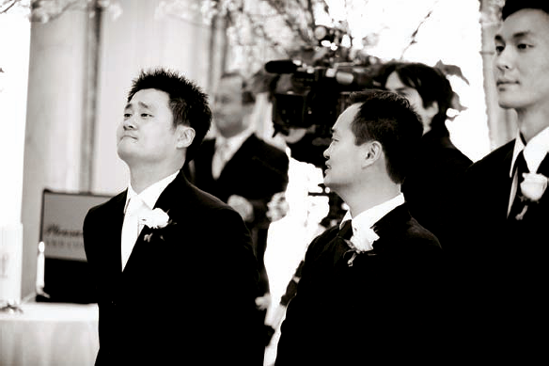
First look - The first time the groom sees his bride as she walks down the aisle is precious. Even if they posed together for images before the ceremony, there is still something very special about the moment when the bride comes into view.
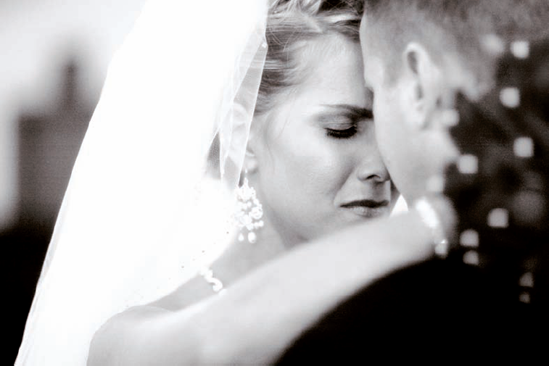
Vows - The vows can be the standard set or personal messages written from groom to bride and bride back to her groom. Either way, you must capture the looks between the couple as they recite the vows.
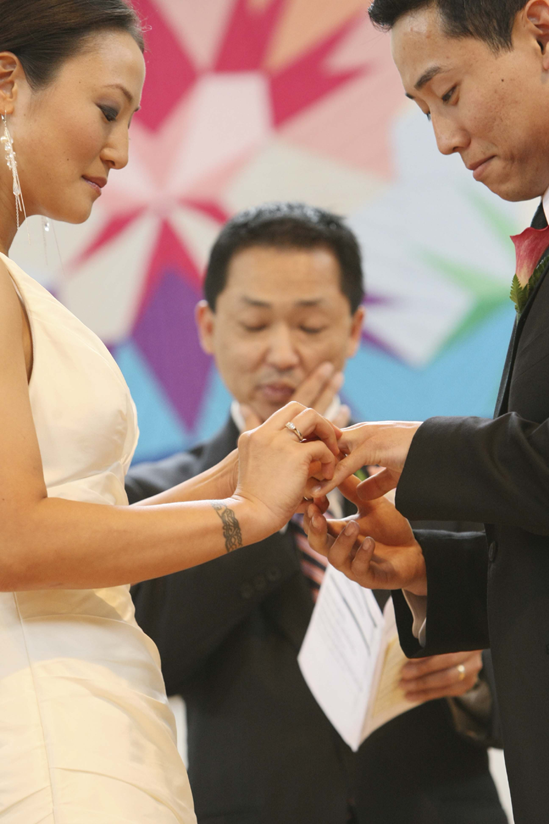
Ring exchange - All weddings have that tender moment when the groom slips the ring onto his bride's finger. This usually happens toward the end of the vows, so it helps to move in closer or use a longer lens before this moment so you are ready. Capture their expressions as they are putting the rings on each other's fingers, and use a long zoom lens like 70-200mm to narrow in on the details of their hands or to capture the tears rolling down their cheeks. I often sit or kneel in front of the first row next to the parents. They know what you are doing and will have no problem having you sit next to them for few minutes. Sometimes the wedding officiate will hold the ring up in air to explain its significance, which is a nice moment to capture. Another is when the best man hands the ring to the officiate.
The guests – The guests are the special people in the lives of the wedding couple and their reactions to the bride and groom during the key moments will help tell the story of the wedding. These reactions create great emotional images.
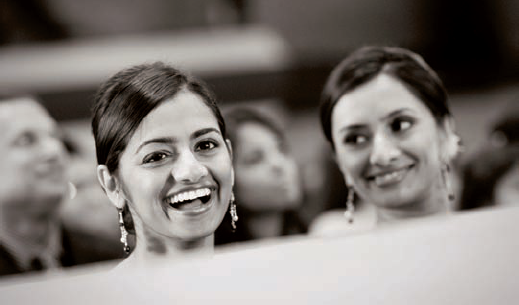
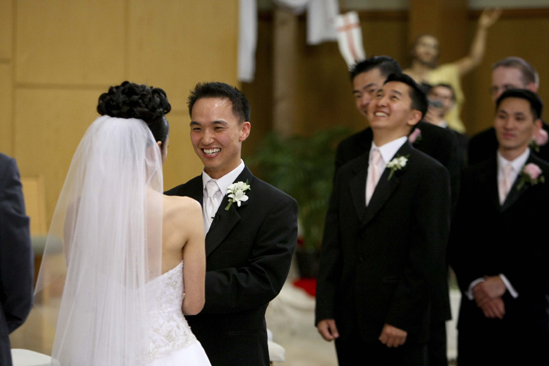
Wedding party – Make sure you shoot the rest of the wedding party during the ceremony. While the wedding is all about the bride and groom, they will appreciate reliving the emotions shared by their closest friends.
First kiss – It's their first kiss as husband and wife and can be one of the most emotional moments during the wedding. Even though the ceremony is practically over, the first kiss symbolizes that the rest of their lives, spent as husband and wife together, is about to begin. Sometimes, their kiss will last for less then a second, so it is good to put your camera in burst firing mode. Most high-end professional cameras have this option that allows you to shoot 3-10 multiple frames per second. Even the moment right after the kiss when they usually smile or laugh is important. If you attend the rehearsal, watch how they kiss so you can plan ahead. If you think they will not kiss for very long time, ask them to count three seconds in their heads when they kiss during the actual wedding and explain why. They'll probably get a real kick out it!
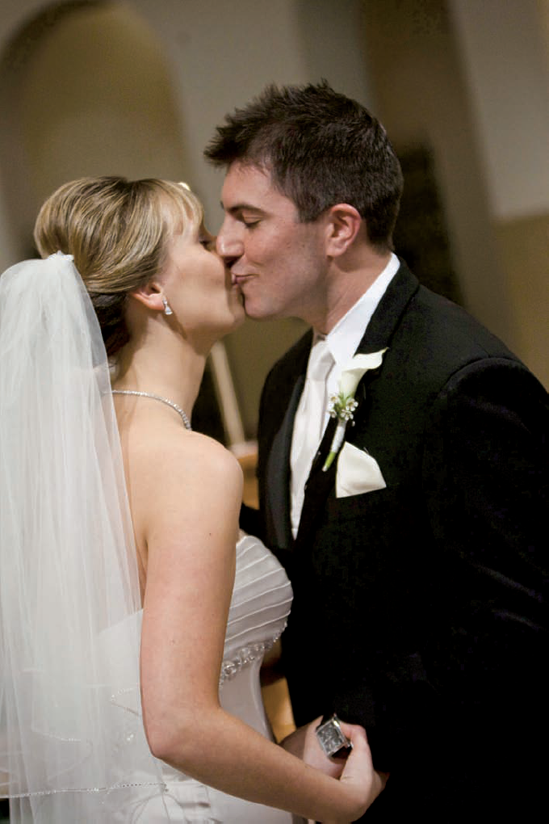
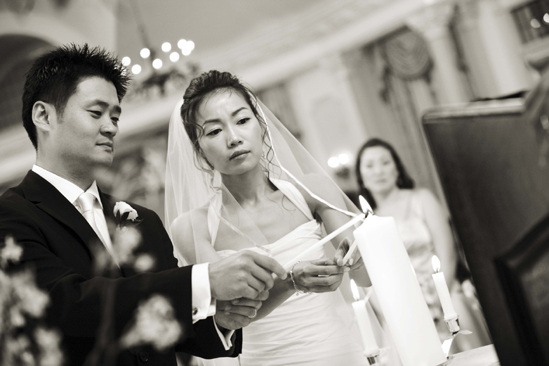
Candle lighting - Lighting a unity candle is becoming more and more popular during wedding ceremonies. The unity candle symbolizes the joining of two families into one, and is usually lit at the end of the ceremony after the couple has been pronounced husband and wife.
Glass breaking - One of the staples of the Jewish wedding is the glass breaking ritual. Not only is it an important part of the wedding, but the groom's foot coming down and crushing the glass also makes a great photo. Many modern couples will break the glass together. Either way, there is really only one way to capture the moment: from the top of the aisle looking down at the bride and groom.
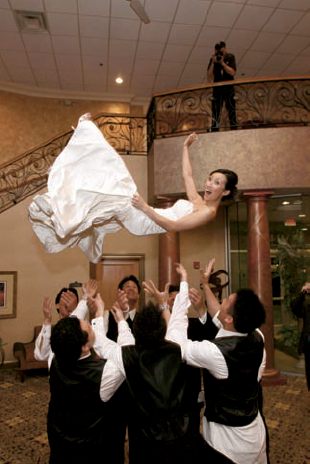
Surprises - Talk to the bride, groom and the wedding party separately before the ceremony to find out if they are planning any "surprises" that they don't want others to know about. They will be glad to share their plans with you so you can capture that moment.
Husband and wife - Capture the bride and groom walking up the aisle together as husband and wife after the ceremony. Chances are, they'll both be smiling! If possible also shoot photographs of the wedding guests as they turn to see the couple.


